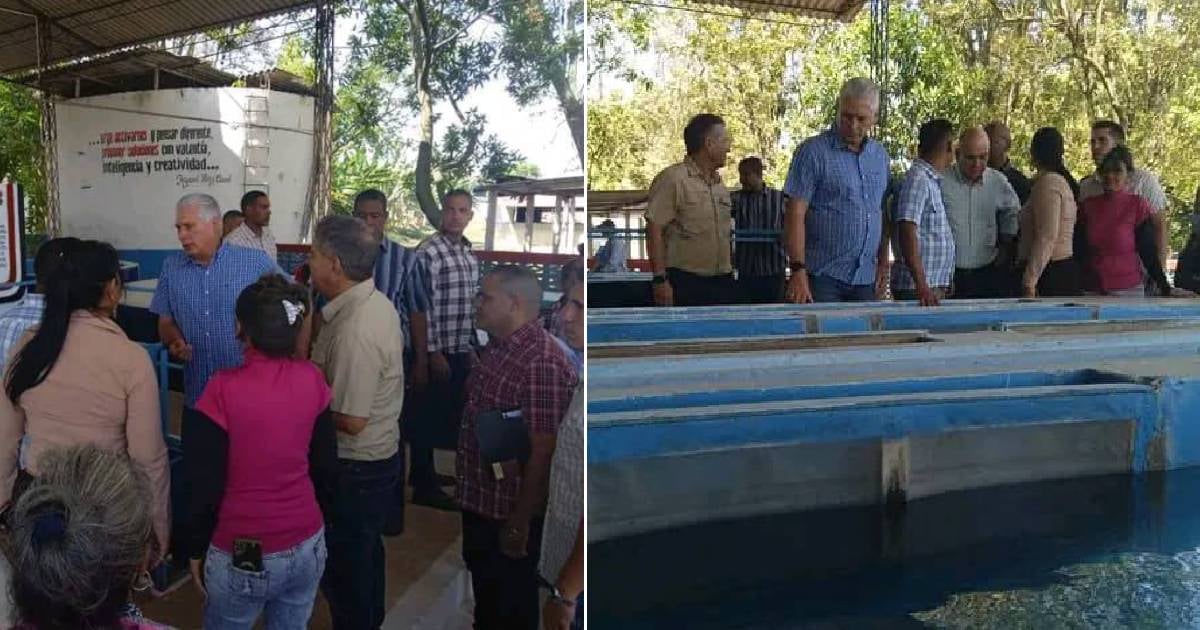Amid Cuba's severe food crisis, President Miguel Díaz-Canel visited the ACUIPASO Base Business Unit in Bartolomé Masó, Granma province, where clarias and other freshwater species are bred. This visit is part of the regime's efforts to enhance aquaculture as a means to address food shortages. Díaz-Canel was joined by Roberto Morales Ojeda, a member of the Communist Party's Political Bureau, along with provincial authorities, as they toured the facility, which is integral to a state-backed initiative to boost alternative food production amidst a scarcity of basic goods. This was reported on the Facebook page of the General Directorate of Education, Bartolomé Masó Márquez, Granma.
ACUIPASO plays a significant role in producing fish like the claria, a species introduced to Cuba for its resilience and rapid growth, although it has been controversial due to its environmental impact. The president's visit is part of a broader government strategy to highlight productive projects across various provinces at a time when citizens are struggling to access food owing to inflation, declining imports, and the collapse of the national production infrastructure.
Despite the push for such initiatives, experts and citizens alike have raised concerns about their immediate effectiveness, given the structural issues, resource shortages, and the limited distribution of products to the wider populace. Since 2022, as part of its numerous goals, the Cuban government has aimed to increase fish consumption by 2030 through aquaculture. In 2023, a proposal was made by a government official encouraging families to raise fish in neighborhood ponds to enhance nutrition.
That year, a resident in the municipality of Consolación del Sur in Pinar del Río started breeding fish in a small pond on what appears to be his property, as reported by local authorities. According to recent statistics, the province of Sancti Spíritus contributes nearly 30% of the freshwater fish caught in Cuba, surpassing 3,000 tons in 2024. However, this food is scarcely seen in retail networks or on local tables, a situation mirrored across the nation. While the populace questions why fish is not regularly available or quickly disappears once it arrives, authorities maintain that it is distributed, but high demand results in rapid depletion.
Cuba's Aquaculture Efforts and Food Crisis: Common Queries
What is the purpose of Díaz-Canel's visit to the aquaculture facility in Granma?
The visit aimed to spotlight the government's efforts to boost aquaculture as a solution to the country's food shortages by producing alternative food sources like clarias and other freshwater fish.
Why is the claria fish controversial in Cuba?
Claria is considered controversial due to its environmental impact, despite being valued for its resilience and fast growth, which makes it a viable option for food production.
How is the Cuban government planning to increase fish consumption by 2030?
The government aims to boost fish consumption through aquaculture projects, including encouraging families to raise fish in neighborhood ponds, as part of their strategy to improve nutrition and food availability.
